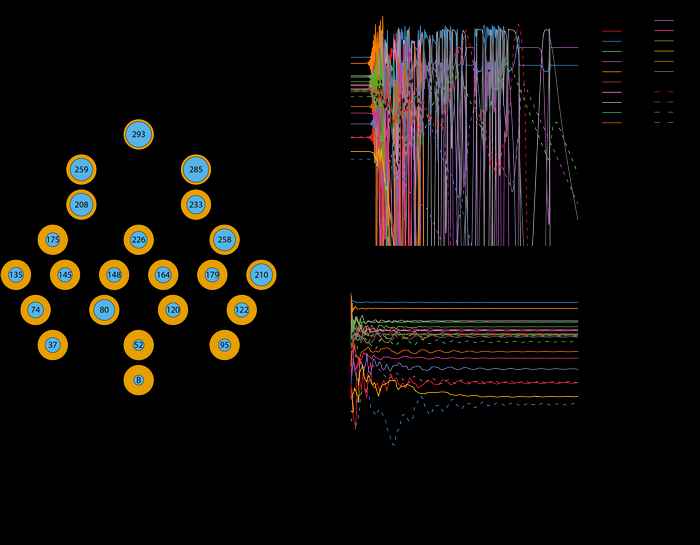Differences between juveniles and adults determine resilience of complex ecological communities
31 May 2021
Biodiversity is declining and species are rapidly going extinct, raising concerns that the dwindling number of species may cause entire ecological communities to collapse. But whether or not ecological communities that include more species are indeed more resilient and better to withstand natural and human-induced disturbances is a question that has been hotly debated for more than 50 years without reaching a conclusive answer. The new study by Prof. André de Roos from the UvA Institute for Biodiversity and Ecosystem Dynamics may well provide a resolution to the debate. The study accounts for two different axes of complexity and reveals how their interplay crucially determines the dynamics and functioning of complex systems.
Species networks
Early researchers postulated that more complex, diverse ecological communities, such as found in tropical rainforests, are more resilient, but these claims were mostly based on verbal and intuitive arguments. In a classic paper from 1972 the famous theoretical ecologist Robert May convincingly refuted these claims by analyzing the interactions that occur between species in a community from a quantitative, network perspective. Based on his mathematical analysis he concluded ‘In short, there is no comfortable theorem assuring that increasing diversity and complexity beget enhanced community stability; rather the opposite is true. The task, therefore, is to elucidate the devious strategies which make for stability in enduring natural systems’. May’s results incited the complexity-stability debate in ecology, which is unresolved to this date.
Many follow-up studies have revealed aspects of communities and characteristics of the interactions between species that contribute to stability, but what mechanisms underly and hence explain the stability of complex, diverse communities remains an enigma. ‘In a recent authoritative review it was concluded that for stability of ecological communities to occur the growth of most if not all species must be limited primarily their own abundance, rather than by the pressure they experience from competitors or the predation they are exposed to from top predators in the community. Apparently, community stability can only be explained as long as the network of interactions between species plays a minor role,’ says de Roos.
Differences between individuals
All studies up to now, however, have focused exclusively on the network of species interactions and adopted the population as the lowest level of biological organization accounted for. All individuals of a species are in that case assumed to be identical, even though in nature no two individuals are alike. Differences between two individuals of the same species particularly arise from their state of development, not only because only adults reproduce, while juveniles grow and mature, but also because juveniles, being of smaller body size, are generally more than adults limited by food availability and run a much larger risk to be captured by predators.
Using computer simulations of complex ecological communities Prof. de Roos now reveals that these obvious differences between juveniles and adults lead to dynamic changes in the densities of the two stages. ‘In turn, the dynamics of population stage-structure stabilizes the complex communities and makes them more resilient. In fact, on the basis of the network of species interactions alone the simulated communities are predicted to be wildly unstable, but these destabilizing forces are swamped and fully attenuated by the stabilizing effects of the dynamics of juvenile and adult densities,’ explains de Roos.

In many biological systems complex networks play an important role and the complexity of their structure is often crucial for their functioning. Networks between nerve cells underlie our behavior and cognition, our physiology is fueled by networks of blood vessels, while our contact network with other individuals determine the spread of diseases. Different, hierarchical levels of organization constitutes a second axis of complexity characteristic for almost all biological systems, from cells to organs, individuals, and populations. The study by André de Roos for the first time merges these two dimensions of complexity and analyzes their interplay, showing that it is this interplay that may well be fundamental for the whole-system dynamics and the functioning of complex systems.
Publication details
André M. de Roos: ‘Dynamic population stage structure due to juvenile–adult asymmetry stabilizes complex ecological communities’, in Proceedings of the National Academy of Sciences 2021, 118 (21) e2023709118; DOI: 10.1073/pnas.2023709118 (https://www.pnas.org/content/118/21/e2023709118)